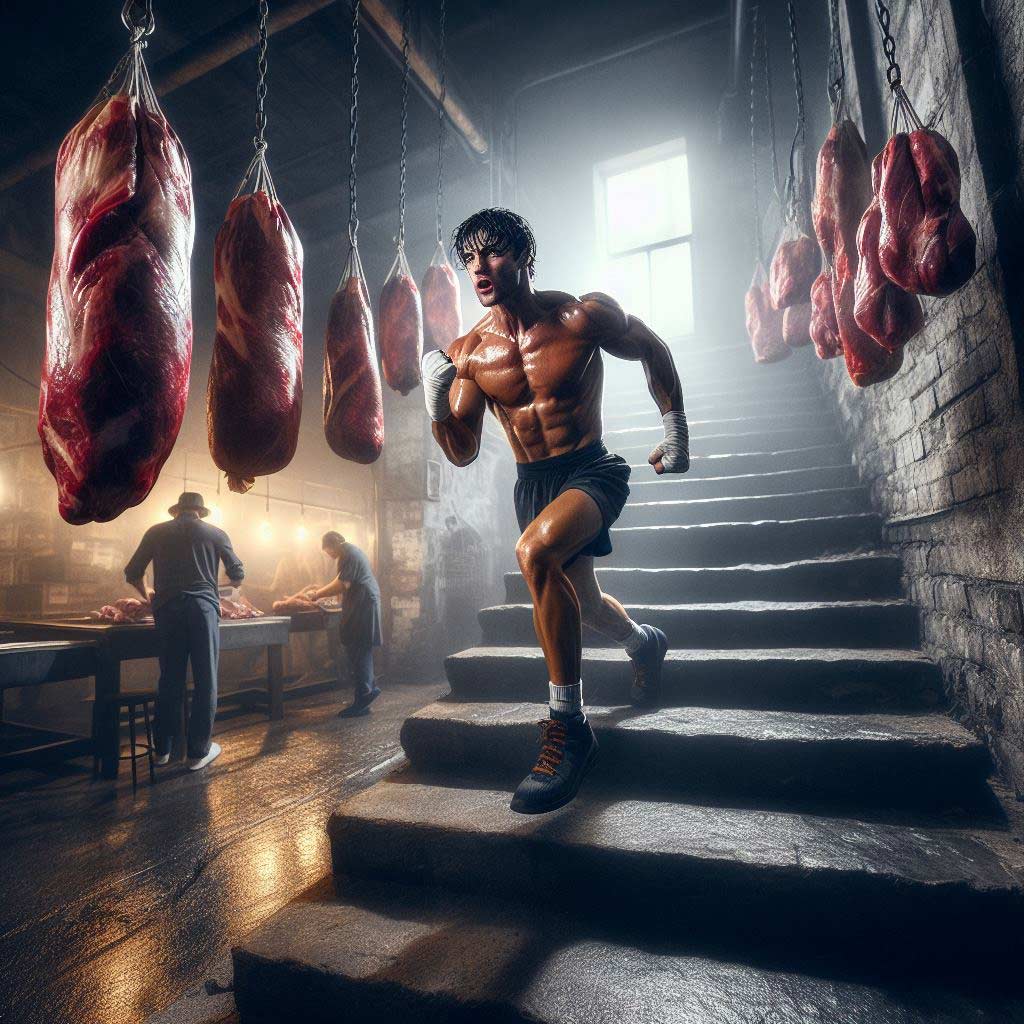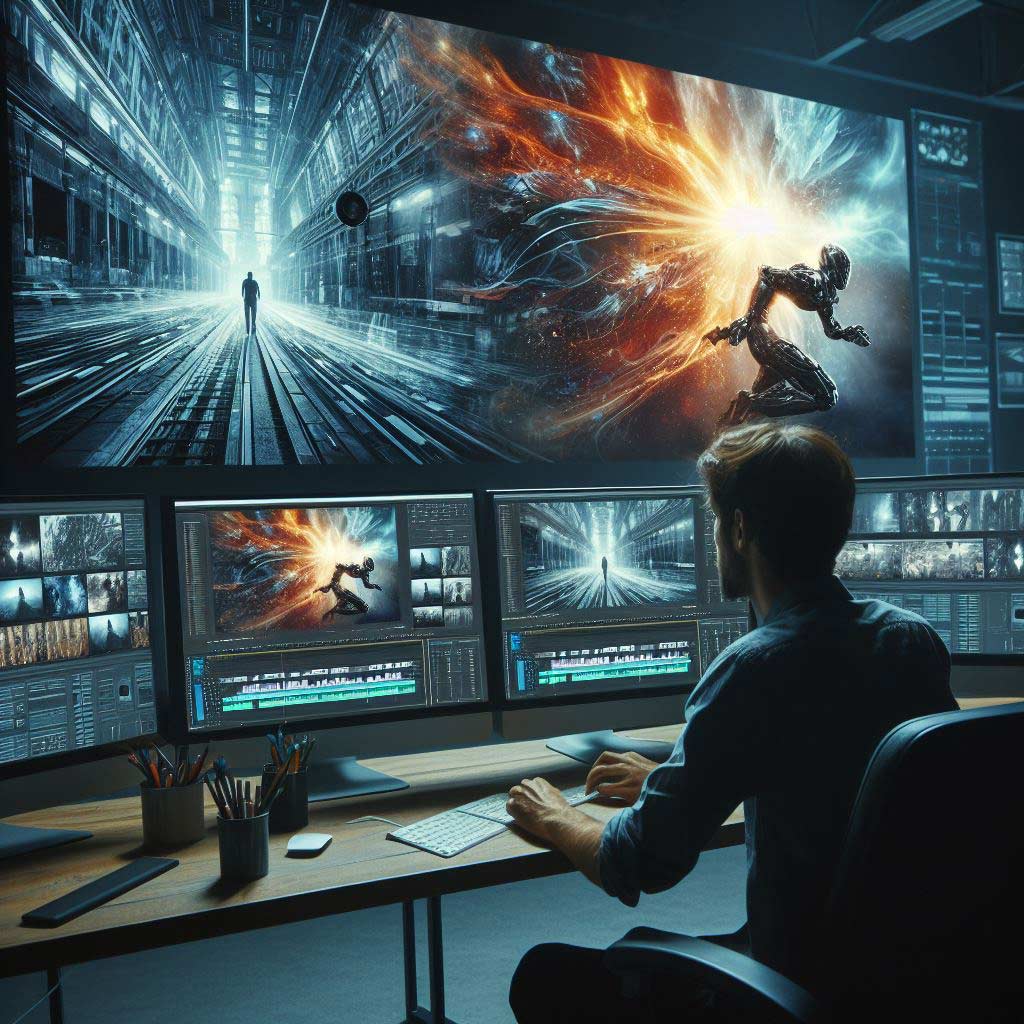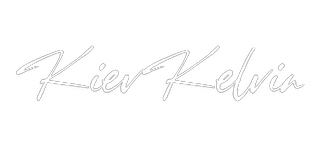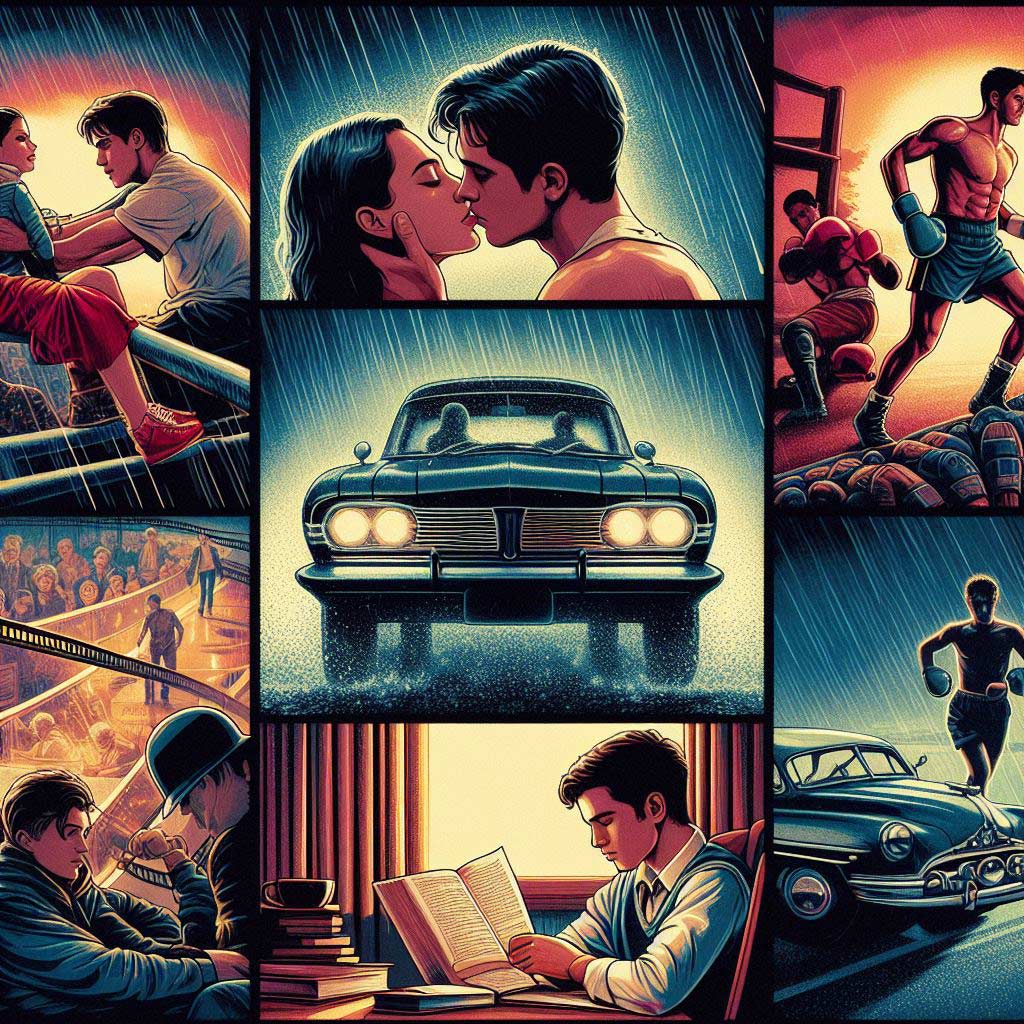Have you watched a movie where a string of short, fast scenes gives you a sense that a lot of time has suddenly passed or significant action occurred? Chances are you’ve witnessed the power of the montage sequence.
Montages in films serve an important storytelling purpose that writers should understand to leverage—or potentially avoid—this creative device.
Used judiciously in screenplays, montages can capture the passage of time in a compelling way to progress story arcs. Overused, they risk confusing audiences.
This beginner’s guide will explain what montages entail in both filmmaking and scriptwriting contexts. You’ll learn:
- The key elements that make up film montages
- When to effectively incorporate montages into your screenplays
- How montage sequences impact storytelling and audience engagement
- Common montage mistakes that amateurs make
- Best practices for writing excellent montages that move the story forward
Let’s delve into the method behind montage madness!
What Is a Montage in Movies and Screenwriting?
In short, a montage sequence is a quick succession of short scenes and clips edited together to show the passage of time, condense action, or convey key events and information.
Montages usually involve music blended with vibrant, evocative visuals rather than extensive dialogue.
Montages leverage the adage that “a picture is worth a thousand words.”
In just seconds of screen time across a few images or clips, montages can establish that days, weeks, months, or even years have passed within the movie’s world.
Or they can build energy and excitement through sequences edited in time with catchy, uptempo music.
While montages originated within film editing, screenwriters today also incorporate planned montage sequences into scripts, specifying scenes and key events that rapid succession that directors later translate to the screen.
Used judiciously, montages are useful devices in both scripts and final cuts. Let’s analyze the key elements that go into montages more closely.
Main Elements that Comprise Effective Montages
Montage sequences in films and screenwriting incorporate a few key elements:
Short Scenes Strung Together
Unlike typical scenes which may last several minutes, montages feature a compilation of very short scenes and clips edited together fluidly.
This succession of shots creates the sensation that considerable time has passed or considerable action occurred in a compressed timeframe.
Montages may contain scenes:
- Jumping through extended periods
- Condensing long stretches into representative snippets
- Showing abbreviated development across subplots or characters
The unifying techniques across these applications are the brevity and pace of the individual scenes before cutting quickly to the next.
Music Rather Than Dialogue
Most montage sequences rely heavily on music blended with the visuals rather than extensive dialogue.
The style of music—whether uplifting, somber, or suspenseful—aims to match the mood and emotion of the event rather than using spoken words.
Sometimes a musical montage may feature a recognizable song that connects deeper meaning to the images on screen.
Think of iconic training montages in 80s movies set to Survivor’s “Eye of the Tiger” or Joe Esposito’s “You’re The Best” from The Karate Kid. The lyrics and tone align closely with the transpiring events in an impactful way.

Of course, not all montages require catchy tunes. But music integrated thoughtfully serves to replace dialogue in carrying the viewer through a sequence of impactful images at pace.
Conveying Passage of Time
Among the most common applications, montages help indicate the passage of significant time in a film through a collection of abbreviated scenes symbolic of a longer progression.
Instead of showing a character’s gradual development across years of medical school through extensive linear scenes for example, a training montage may show intense studying, long work days, and key events over 30 seconds.
Viewers understand through these visual cues that considerable time and effort has elapsed to reach an endpoint such as graduation day implied through costumes and environments.
This technique applies to many story arcs from falling in love to undertaking intense preparation across sports training, military boot camps, artistic mastery, or academic learning. The sequence of images tells a time passage story.
Plot and Character Development
Beyond simply indicating that time has passed, well-constructed montages also serve to progress plot points and develop characters within a compact span of screen time.
The individual scenes woven together reinforce central themes or turn-key story arcs in new directions.
So while time jumping occurs, the events carry relevance and connections become apparent through their sequence rather than getting lost as throwaway snapshots of action.
Focus on Verbs/Action vs Dialogue
Since most montages minimize dialogue, the scenes rely more heavily on visual verbs and actions to communicate key events and character developments rather than through extensive conversation.
The sequence of images aims to “show” viewers what is happening more so than “telling” them explicitly through spoken words. Demonstration carries the plot progression instead.
Of course, montages may contain some dialogue, yellings, or emotive sounds blended with the music. But generally, the focus rests more on dynamic visuals progressing with rhythm and pace.
When Should Screenwriters Use Montages?
Montage sequences serve multiple effective applications within movie storytelling. As a screenwriter, consider incorporating montages strategically in situations such as:
Transitioning Through Periods Not Essential to Show
As outlined already, montages allow writers to progress stories through significant passages of time without depicting every incremental scene or uneventful stretch of life.
This technique keeps the pace engaging by focusing only on symbolic events that capture broader developments occurring over days, weeks, months, or years in condensed form.
Demonstrating Skill Development Through Training
Training montages epitomize the optimal environment to show rather than tell.
Instead of verbose dialogue about the protagonist improving their skills, a montage can demonstrate visible progress through sequences such as:
- Practicing karate
- Studying late into the night
- Pushing through exhaustive workouts
- Failing first and then refining the form
This format works well for various settings from military training to scientific learning curves to artistic mastery.
Changing the Pace or Tone in the Storyline
A sudden montage introduces a marked shift in dynamics that alters the mood or pace within a film script.
The upbeat visual sequences feel energizing following tense dialogue. Or the relief of something upbeat transitions a dark turn to a more inspiring tone.
Montages can also build anticipation or excitement through a rhythmic succession of clips foreshadowing an upcoming event like the sports final or election night ballots rolling in. The possibilities are vast.
Developing Relationships Between Characters
Montages provide an ideal medium for demonstrating the progression of relationships on screen, especially romantic arcs from initial meet-cutes to the sparks flying of courtship leading into eventual couplings.
The sequences may show:
- Couples going on fun dates
- Getting to know each other through conversation
A young couple gazes into each other’s eyes lovingly as they share an intimate embrace at sunset on a beach pier, representing building affection.
- Growing intimacy through gestures or eye contact
- Sharing meaningful adventures that bring them closer
Rather than bland exposition stating that two characters are falling in love, montages make it tangible through symbolic moments illustrating their growing connection.
Reinforcing Themes and Emotions
Montages unite a series of scenes sharing connections that reinforce core messages or themes within the broader storyline.
Matching visuals emphasize these concepts whether showcasing struggle and perseverance or shared passions coming to fruition.
Relatedly, a succession of images built around an emotive theme—like heartbreak or elation—heightens impact beyond isolated scenes.
The sequence collectively amplifies the emotion in a way dialogue alone cannot achieve.
How Do Montages Impact Strong Storytelling?
Used strategically in films and script writing, montage sequences help:
- Condense Significant Action – As outlined already, montages compress longer stretches of significant events into short sequences for pacing and conciseness. This technique prevents slower passages from stagnating the plot progression.
- Allow Viewers to Infer Meaning – By demonstrating symbolic, metaphorical moments in sequence, montages enable viewers to infer larger meanings about themes or character growth rather than spelling everything out verbatim through dialogue. Showing small snippets illustrates broader developments across time for interpretation.

- Build Excitement and Anticipation – Fast sequences cut to music build incredible momentum by raising energy levels through visual rhythms and pacing. This effect builds exhilaration for upcoming events within the storyline too.
- Illustrate Character Growth Succinctly – Instead of bland exposition about someone improving their skills, montages demonstrate visible progress succinctly through sequences of actions—conveying significant growth and passage of time without extensive screen runtime.
- Provide Rhythmic Interludes – Montage scenes deliver a lyrical, musical interlude within a film through their marriage of dynamic images edited to accompany music. This pacing shifts offer contrast to preceding dialogue while carrying visual storytelling forward fluidly.
Common Montage Mistakes to Avoid
When overused or misapplied, montage sequences may detract from otherwise strong screenwriting rather than punctuating stories effectively. Common novice mistakes include:
- Overusing Montages as a Crutch – Some poor screenplays employ montages as almost transitions between every major storyline shift to avoid writing thorough plots across time. Excessive usage diminishes the device’s impact and jars pacing. Use only when appropriate.
- Time Transitions Feeling Too Abrupt – Even within montages, the individual scenes need a logical sense of timing and order. Haphazard sequences may leave viewers confused by disjointed time jumps or weak connections between visual arcs. Continuity still matters.

- Themes or Sequences Ill-Suited to Montages – Not all story elements translate fluidly into abbreviated visual sequences matched to music. Overreaching with montages in scripts risks disjointed results on screen when unnecessary. Be judicious.
- Jarring Tonal Shifts Around Montages – Beware montages that induce whiplash before and after their interlude within scripts. The sequences should align with surrounding scenes for smoother transitions rather than intensely contrasting dynamics. Unless intentional, avoid tonal dissonance.
Best Practices for Powerful Montages
When written strategically into film scripts and shot evocatively on screen, montages transport audiences across time and plot developments gracefully. Here are best practices:
- Match Related Scenes to Reinforce Overarching Themes – The individual scenes within strong montages carry interconnected meanings and symbols that play off each other to emphasize broader themes or messages within the story. Build sequences that reinforce ideas.
- Ensure Continuity Logically Progresses Events – While time may pass distinctly across its sequences, well-constructed montages still maintain continuity and logic in the ordered progression of selected events on display across their span. Chronology still matters even in shorthand.

- Select Music Style and Tempo that Complements Mood – Whether an energetic anthem punctuating triumphant training, or a bittersweet ballad underscoring the nostalgia of innocence lost across years—the musical backdrop should match the emotional core of the events depicted.
- Establish Where Montage Begins and Ends Within Storyline Timeline – Well-placed montages connect events already established before accelerating into time compression and then re-emerging at an endpoint in the storyline marked by evident cues like date stamps or radically evolved environments making clear considerable time passed through the sequence’s span.
- Use Montages Judiciously and Only When Appropriate – As advised throughout, the hallmark of montage excellence rests not on excessive use across a whole film but rather on strategic, impactful placement only when the story elements legitimately warrant condensed advancement best achieved through standout sequences.
Conclusion
Incorporating montages at key moments enables screenwriters to progress stories through significant passages of time, demonstrate important developments, and build engagement through impactful sequences of visuals and music.
Used judiciously rather than overused across every transition, montages compress exposition into evocative shorthand.
Just be sure the standalone scenes logically connect, the music matches the mood, and that plotting continuity remains coherent across time jumps.
Well-constructed montages captivate audiences through showing rather than excessively telling core events and relationships central to your excellent screenplay.
Frequently Asked Questions
What is a montage example?
A classic montage example is the training montage in the movie Rocky. A series of short clips shows Rocky doing exercises, practicing boxing, running up steps, and more over weeks and months, getting progressively stronger as inspirational music plays.
How do you depict a montage in a script?
In a script, you would introduce the start of a montage sequence with a heading like “TRAINING MONTAGE” or “GETTING TO KNOW EACH OTHER MONTAGE” and then describe the key symbolic scenes and character developments that should unfold across it until you transition back out of the montage.
What is a montage in a story?
A montage in a story is a sequence editing together a series of short scenes to show the passage of time and key events transpiring over an extended period in condensed form for the audience rather than depicting incremental developments across years of plot time linearly.
What is the difference between a montage and a series of shots?
The main difference is duration and purpose. A montage condenses potential years into minutes through symbolic vignettes while a series of shots features full scenes covering events in real plot time. Montages also usually incorporate music to carry storytelling whereas a series of shots relies more on dialogue.
What are the 5 elements of montage?
The five key elements of montages are:
- Short abbreviated scenes
- Music or emotive audio blended with images
- Passage of significant time
- Conveying plot and character developments
- Focus on dynamic verbs/action vs Dialogue
What are the 5 montages?
While many types exist across films, the five most common montage sequences include:
- Training montages
- Traveling cross-country montages
- Falling in Love / Relationship montages
- Preparing for an epic battle montages
- Coming of age/period of growth montages
How do you write a quick montage in a script?
Introduce the montage with a heading in all capital letters naming its purpose. Use descriptions like “TRAINING MONTAGE:” or “DATING MONTAGE:”. Follow with single-sentence descriptions of key symbolic scenes to unfold across it until you conclude by transitioning out, such as BACK TO SCENE or END MONTAGE.
What are the types of montage in a film?
Common montage types depicted in movies include travel montages hopping locations, training/preparation montages developing skills, romantic dating montages showing bonds forming, coming of age montages demonstrating growth, falling into despair montages symbolizing downward trajectories, and passage of time montages jumping years.
How do you make a good montage?
Characteristics of excellent montages in filmmaking include a fast pace through brief scenes, continuity, and logic connecting the symbolic events, music that matches the mood and momentum, reinforcing broader themes or impacting plot arcs across the time passage, bookended cleanly within the story timeline, and used strategically only when warranted rather than gratuitously across trivial developments.

